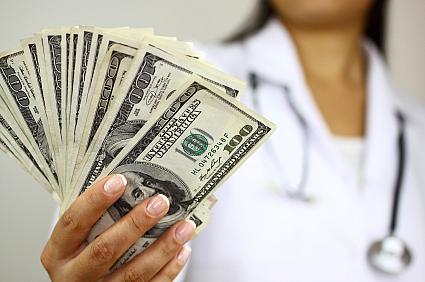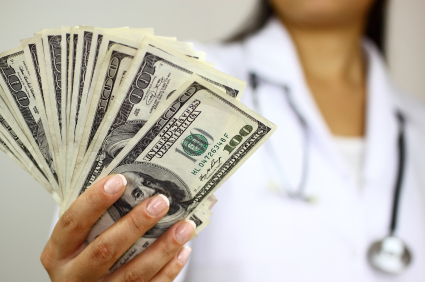Five Reporting Tips From Reuters Health's Investigation of Medical Research Conflicts of Interest

 Frederik Joelving of Reuters Health has been asking those uncomfortable questions health writers often avoid. How much do you make and how do you make it?
Frederik Joelving of Reuters Health has been asking those uncomfortable questions health writers often avoid. How much do you make and how do you make it?
Antidote wrote last week about the importance of exposing conflicts of interest when writing about clinical trials. Joelving shows how hard it can be to write about conflicts in science because of the poor job scientific journals do in making financial conflicts transparent. In a package of stories last week, he wrote:
In a review of 50 reports from the British Journal of Dermatology, a top-tier skin research journal, Reuters Health has found that authors often don't disclose even the most glaring conflicts of interest. And editors are reluctant to do anything about it -- in fact, they don't even agree on when a conflict of interest exists.
What's more, many journal publishers derive a substantial part of their revenue from drug ads and reprint requests from pharmaceutical companies, and there are examples of editors who moonlight as paid consultants for the industry.
This is one of the best pieces we have read on the topic. Here are five great tips for health journalists from Joelving's fine reporting:
1. Find out just what "no conflicts" means. I have definitely been guilty of taking at face value statements by authors that they "have no conflicts of interest," especially when other authors on the same paper disclose voluminous conflicts. Joelving actually followed up to see what was hiding behind that phrase:
Yet of the 50 most recent BJD reports from scientists at L'Oreal, Shiseido, Novartis and similar companies, 13 declared no conflict of interest. And that's not counting one study that promoted a L'Oreal-Nestle product on shaky grounds without disclosing that most of the authors were employed by the manufacturer or had been paid by it. The BJD only corrected the problem (reut.rs/eTnMOq) after a Reuters Health story (reut.rs/jujOYb) pointed it out in July.
2. Ask the author. Too few health writers do this. Joelving showed that it's simple and that it works. He wrote about an author, Dr. Fernand Labrie, who holds patents for a hormone called DHEA and "owns companies dedicated to marketing it for certain medical problems." Has Labrie disclosed this? No.
But when Reuters Health contacted him, he acknowledged that he owns the company that funded the research, EndoRecherche, and holds patents for DHEA, including one for anti-aging skin treatment. EndoCeutics, a daughter company of EndoRecherche, is currently involved in late-stage development and marketing of DHEA for female sexual problems. According to a 2010 press release, the company has signed a contract with pharmaceutical giant Bayer, which may net EndoCeutics up to $330 million (CAD) in addition to royalties from sales. Of three recent DHEA skin studies published by Labrie and his colleagues, none mentions this relationship.
3. Give the science a stress test. Don't just take a study's word for it. Show the study to other experts and see what they think. Probe the study's limitations and weaknesses, especially when scientists with conflicts are involved.
But the findings only looked at skin changes at a microscopic level, and whatever visible effects the hormone might have -- and potential side effects with long-term use -- are uncertain. In fact, one dermatologist who reviewed the study for Reuters Health said it shows DHEA also boosts skin molecules that may slow wound healing. "I would ask if giving DHEA actually has a pro-aging effect and not an anti-aging effect," said Dr. Christos C. Zouboulis of Dessau Medical Center in Germany.
4. Find the rebels. It's easy to see the widespread funding of medical journals of drug makers and device makers as a fact of life, but there are journals that refuse industry funding. Joelving provided examples throughout.
Earlier this year, an Australian medical journal decided to pull the plug on drug ads. "Essentially, our subscribers had to pay more for the journal," Dr. George Jelinek, past editor of Emergency Medicine Australasia, told Reuters Health in an e-mail. "We believe that is perfectly reasonable," he added, "and far preferable to having a dependence on drug company revenue, a dependence which ultimately requires some repayment."
5. Cite when it's right. Reporters are often discouraged by editors from citing other people's work. We particularly liked the way the story gave due credit to the Milwaukee Journal-Sentinel.
One of the most egregious examples of financial double-dipping in the journal community is Dr. Thomas Zdeblick, editor-in-chief of the Journal of Spinal Disorders & Techniques. Since taking the helm at the journal in 2002, Zdeblick has made more than $20 million in patent royalties for spinal implants sold by Medtronic, according to a 2009 report in the Milwaukee Journal Sentinel. At the same time, Zdeblick's journal published dozens of studies on Medtronic products, and they often were positive, the Journal Sentinel found.
